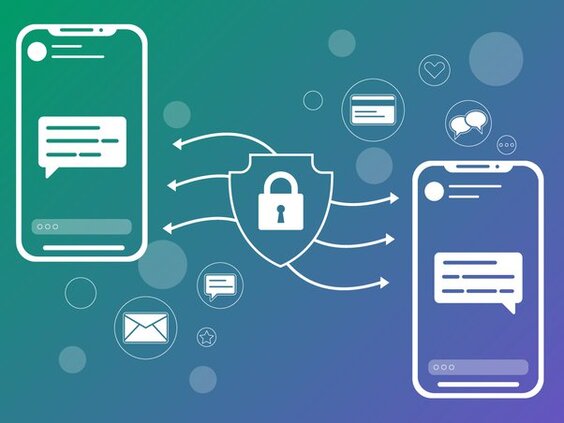

The digital world has transformed education, making learning more accessible and engaging. However, it has also exposed children to online threats, including child pornography and cyber exploitation. Predators lurking on social media, gaming platforms, and chat rooms exploit children, often leading to severe psychological and physical harm. As educators, teachers play a crucial role in protecting students from such dangers by recognizing warning signs, fostering awareness, and guiding them toward safe digital practices.
This guide will help teachers understand online child exploitation, recognize warning signs, and implement preventive measures to ensure a safer digital environment for students.
Understanding Online Child Exploitation
Online child pornography involves the sexual abuse and exploitation of minors (below 18 years) through explicit content shared online. Predators manipulate children into sharing inappropriate content, often through social engineering tactics such as:
-
Grooming: Building trust to manipulate children into exploitative situations.
-
Coercion: Forcing children to participate in explicit activities through threats or blackmail.
-
Circulation of Content: Once explicit images or videos are shared, they often spread across the internet, making it difficult to remove them permanently.
Disturbing Reality: The National Centre for Missing and Exploited Children (NCMEC) estimates that Indian users upload approximately 5,000 explicit images or videos per month, with Delhi, Maharashtra, Gujarat, Uttar Pradesh, and West Bengal leading in such uploads.
Why Should Teachers Be Concerned?
Educators are in a unique position to identify and intervene in cases of online child exploitation. The consequences of these crimes are severe and can deeply impact a child’s life:
-
Trauma & Psychological Distress: Victims often experience long-term emotional damage, including anxiety, PTSD, and suicidal thoughts.
-
Academic Decline: Victims may struggle with concentration, engagement, and attendance issues due to emotional distress.
-
Social Isolation: Children subjected to online exploitation often withdraw from peers, fearing judgment or further harm.
-
Risk of Re-exploitation: Without intervention, some children fall into repeated cycles of abuse and manipulation.
By educating students about online risks and fostering open communication, teachers can play a pivotal role in shielding them from such dangers.
Recognizing the Warning Signs
Children may exhibit distressing behavioral changes if they are victims of online exploitation. Teachers should be alert to:
-
Emotional Signs:
-
Unexplained sadness, depression, or emotional withdrawal
-
Fearfulness or anxiety when using digital devices
-
Sudden mood swings or aggression
-
-
Behavioral Changes:
-
Avoidance of social interactions or school activities
-
Excessive secrecy about online activities
-
Unexplained gifts, money, or gadgets
-
-
Physical Indications:
-
Signs of extreme distress, self-harm, or drastic weight changes
-
Frequent complaints of headaches, stomachaches, or other stress-related illnesses
-
Preventive Measures: What Teachers Can Do
Teachers can adopt proactive strategies to protect children from online predators. Here’s how:
1. Educate Students on Digital Safety
-
Teach students about cyber hygiene, emphasizing responsible social media use and privacy settings.
-
Discuss dangers of online interactions and emphasize the importance of verifying online acquaintances.
-
Encourage students to report uncomfortable experiences without fear of punishment.
2. Foster Open Communication
-
Build a safe classroom environment where students feel comfortable sharing concerns.
-
Reassure students that seeking help is not shameful but essential for their safety.
-
Guide students on how to block and report inappropriate content or individuals online.
3. Collaborate with Parents and Authorities
-
Organize digital safety workshops for parents, informing them about online threats and protective measures.
-
Work closely with school counselors and cyber experts to create student-friendly awareness programs.
-
Report any suspicious activities to cybercrime.gov.in and inform child protection agencies if necessary.
4. Implement School-wide Digital Policies
-
Advocate for safe internet usage policies within school premises.
-
Integrate cybersecurity awareness into curricula, teaching students about ethical online behavior.
-
Encourage schools to use monitoring software on school-provided digital devices.
5. Encourage Ethical Use of Technology
-
Promote positive digital engagement, such as ethical hacking and cybersecurity education.
-
Guide students towards safe online communities where they can learn and grow without risks.
Actions to Take Against Online Child Pornography
If teachers come across instances of online child exploitation, they must take swift action:
-
Report Online: Lodge complaints anonymously at cybercrime.gov.in.
-
Inform Law Enforcement: Contact local cyber police stations to ensure immediate intervention.
-
Use Helplines: Dial 1098 (Child Helpline) for urgent assistance.
-
Alert School Authorities: Ensure school management takes necessary precautions and informs relevant authorities.
Legal Framework: Understanding the Law
India has strict laws against child pornography and online exploitation:
-
Section 293, IPC (1860): Prohibits distribution of obscene material to minors.
-
Section 67B, IT Amendment Act (2008): Addresses child pornography and related cybercrimes.
-
POCSO Act (2012): Protects children against sexual offenses, including digital exploitation.
These offenses are non-bailable, with punishments extending up to 10 years of imprisonment and hefty fines.
Conclusion
Teachers are not just educators—they are guardians of a child’s well-being, both offline and online. By actively recognizing warning signs, fostering a culture of safety, and educating students on digital ethics, educators can play a critical role in preventing online child exploitation.
The fight against cyber exploitation is a collective responsibility. Let’s empower our students with knowledge, vigilance, and the confidence to navigate the digital world safely.
If you are an educator, take a step today—initiate conversations, educate students, and ensure your school has a robust digital safety policy. Together, we can create a secure and nurturing environment for every child.
Cyber Hygiene Foundation
- OnlineSafetyForKids TeachersOnlineSafety CyberAwareEducators DigitalSafetyForTeachers EdTechSecurity TeacherCyberSafety CyberAwareness CyberSafety SafeInternetForAll CyberHygieneForAll
You May Also Like It
The internet has transformed the way children learn, play, and
Instant messaging (IM) platforms have become indispensable for communication in
Leave A Comment
Don’t worry ! your e-mail address will not published.








0 Comments